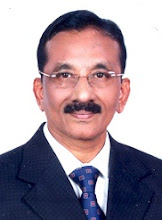The festivities begin with the
‘Kodiyettu’ (flag hoisting ceremony), marking the start of the celebrations.
The temple complex transforms into a riot of colors and traditions, showcasing
the rich cultural heritage of Kerala.
Here are the key dates for the
Kottayam Thirunakkara Utsavam 2024:
- Kodiyettu (flag hoisting): March 14, 2024
- Pooram (festival day): March 20, 2024
- Arattu (concluding ceremony): March 23, 2024
The Arattu, which falls on March 23 this year, is the grand finale of the festival. It features a spectacular procession with decorated elephants, vibrant floats, and performances by drummers and artists.
The
Kottayam Thirunakkara Utsavam is a must-visit for anyone interested in
experiencing the rich culture and traditions of Kerala.
The Thirunakkara Mahadevar Temple is an ancient
Hindu temple dedicated to Lord Shiva. It is located in the heart of Kottayam
city, Kerala, India. The temple is one of the 108 Shiva temples in Kerala that
are considered to be sacred.
The
temple is believed to have been built in the 16th century by the Thekkumkur
Raja. The temple is built in the traditional Kerala architectural style. The
main entrance to the temple is through a gopuram (gateway tower). The gopuram
is decorated with intricate carvings of Hindu deities and mythological scenes.
The
inner sanctum of the temple houses the idol of Lord Shiva. The idol is made of
black stone and is in the form of a lingam. The lingam is surrounded by a yoni
(pedestal).
The
temple is a popular pilgrimage site for Hindus. Devotees from all over Kerala
come to the temple to offer prayers to Lord Shiva. The temple is also a popular
tourist destination.
Here
are some of the interesting facts about the Thirunakkara Mahadevar Temple:
- The temple is one of the 108 Shiva temples in Kerala that are considered to be sacred.
- The temple is believed to have been built in the 16th century by the Thekkumkur Raja.
- The temple is built in the traditional Kerala architectural style.
- The main entrance to the temple is through a gopuram (gateway tower).
- The gopuram is decorated with intricate carvings of Hindu deities and mythological scenes.
- The inner sanctum of the temple houses the idol of Lord Shiva.
- The idol is made of black stone and is in the form of a lingam.
- The lingam is surrounded by a yoni (pedestal).
- The temple is a popular pilgrimage site for Hindus.
Devotees
from all over Kerala come to the temple to offer prayers to Lord Shiva.
The
temple is also a popular tourist destination.








